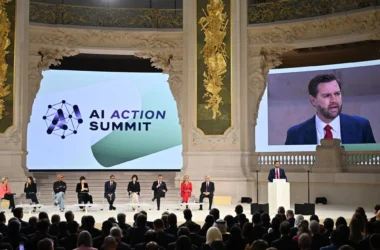As Elon Musk’s Department of Government Efficiency (DOGE) has zeroed in on the United States Agency for International Development (USAID) in its mission to slash wasteful government spending, a flood of revelations has emerged about the kinds of projects American taxpayers have been bankrolling under the banner of “aid.” Far from being the benevolent arm of U.S. foreign policy, USAID increasingly looks like it might have been the linchpin of America’s covert subversion efforts—a sort of humanitarian Trojan horse concealing a much murkier agenda tied to the intelligence community’s machinery and broader geopolitical manuvering.
USAID’s funding, packaged as charity and cultural initiatives, was heavily focused on “capacity building”—which in practice meant grooming specific groups within foreign societies, often marginalized communities, to be ready to mobilize should U.S. foreign policy benefit from destabilizing an uncooperative government. To retain plausible deniability, USAID typically outsourced the grunt work to non-governmental organizations (NGOs) and influential think-tanks, maintaining degrees of separation while holding the purse strings.
Mike Benz, who served as a State Department official during Donald Trump’s first term, has been one of the loudest voices pulling back the curtain on these operations. He’s taken to high-profile platforms—think Tucker Carlson’s show and Joe Rogan’s podcast—to lay out his case against USAID in detail. According to Benz, USAID and other similar organizations have had their fingerprints all over recent efforts to counter China’s growing influence, with Bangladesh serving as a prime example. There, the government of Sheikh Hasina collapsed in July 2024 after riots erupted, forcing her to flee to India. Benz alleges that USAID helped light the fuse, funding activists and even tapping into cultural levers like protest music to rile up the populace—all because Hasina wouldn’t play ball and allow a U.S. military base on her soil, which Washington saw as a critical check against China’s regional ambitions. He draws a straight line from that episode to earlier incidents, like the 2009 coup in Honduras that toppled Manuel Zelaya, where USAID allegedly funeled support to opposition factions. A similar playbook, Benz claims, was at work during India’s 2019 election, when USAID supposedly bankrolled “misinformation” crackdowns that conveniently targeted online supporters of Narendra Modi, a nationalist leader who’s often been at odds with U.S. preferences.
Looking ahead, the big question is what Trump’s push to defund these USAID initiatives really means. Is it a sincere attempt to dial back America’s habit of meddling in other countries’ domestic politics, or just a temporary pause? Could there be a genuine shift toward a more principled stance—one where the U.S. resists the urge to incite civil society groups as a bargaining chip when foreign partners dig in their heels during tough negotiations? Benz himself has expressed scepticism that the USAID model is being permanently retired. This prompts a broader reflection: these kinds of shadowy operations—funding unrest, tilting elections, nudging regimes out of power—may simply be an inescapable part of contemporary “big power” politics.




